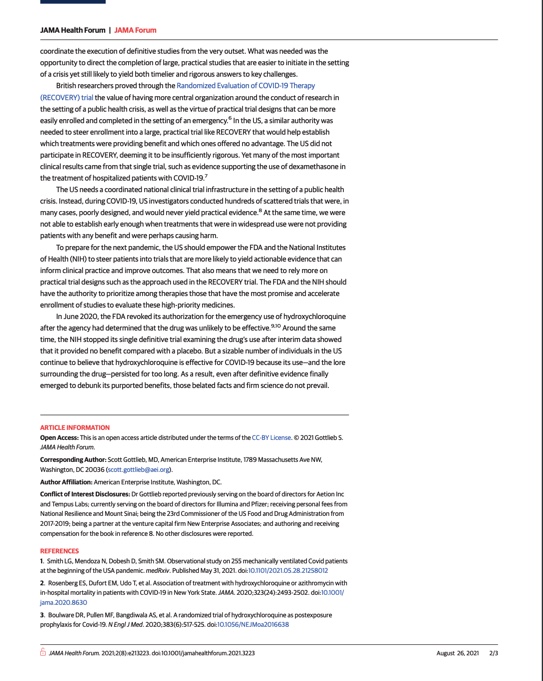
THREAD: Lack of a crisis-proof clinical trial infrastructure left US unable to quickly establish which treatments were effective against Covid and equally important, debunk myths that emerged around drugs offering no benefit or causing harm. My JAMA latest jamanetwork.com/journals/jama-… 



Too much of the early research during the pandemic came from constructs that were never going to yield actionable results. We missed an opportunity early on to field the kinds of practical studies that could be completed in the setting of a crisis but still generate firm evidence
British researchers proved through RECOVERY trial the value of having more central organization around conduct of research in the setting of a public health crisis, as well as virtue of practical trial designs that are more easily enrolled and completed in an emergency setting.
I discuss in depth in my forthcoming book Uncontrolled Spread, steps to remedy these gaps. US needs a coordinated national clinical trial infrastructure in setting of public health crisis. US should empower FDA and NIH to prioritize trials more likely to yield actionable evidence
That also means we must rely on practical trial designs such as approach used in RECOVERY. US didn't participate in RECOVERY, deeming it insufficiently rigorous. Yet many of the most important clinical results came from that single trial, such as evidence on benefits of steroids
It cuts both ways. We also must establish early when something doesn't work. Many continue to hold hydroxychloroquine is effective, even after definitive studies debunked its use; because speculations were able to persist for too long. Firm evidence arrived too late in the debate
• • •
Missing some Tweet in this thread? You can try to
force a refresh







